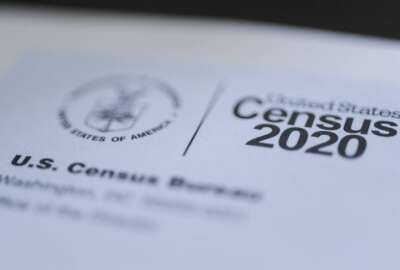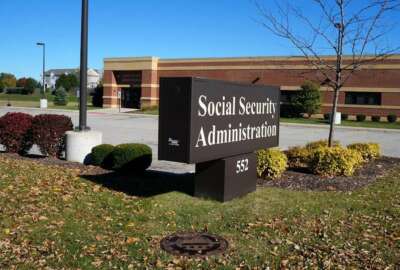Hubbard Radio Washington DC, LLC. All rights reserved. This website is not intended for users located within the European Economic Area.
On Air: Federal News Network
Trending:
Congress passes deal to reopen government, bill heads to President Obama
The Senate and House both voted Wednesday night, passing a bill that reopens the government and funds agencies through Jan. 15, permits the Treasury to borrow n...
By ALAN FRAM
and DONNA CASSATA
Associated Press
WASHINGTON (AP) – The Senate and House both voted Wednesday night, passing a bill (H.R. 2775) that reopens the government and funds agencies through Jan. 15, permits the Treasury to borrow normally through Feb. 7, and provides back pay for federal employees furloughed during the 16-day government shutdown. The bill now heads to President Barack Obama for his signature, which he has said he will sign immediately.
The Senate passed the bill by a vote of 81-18, while the House voted 285-144 in favor of the bill.
When exactly federal employees will be expected back to work is still unclear.
After Congress approves a funding bill, the furloughed employee is “expected to return to work on your next regular duty day,” according to a sample furlough notice the Office of Personnel Management has provided to agencies. However, individual agencies should also exercise their own discretion, OPM said in its official shutdown guidance.
Earlier in the night at the White House, Obama hailed the Senate’s vote and encouraged the House to follow suit. Once the measure reaches his desk, he said, “I will sign it immediately. We’ll begin reopening our government immediately and we can begin to lift this cloud of uncertainty from our businesses and the American people.”
Less than an hour later, as debate began in the House, Rep. Harold Rogers, R-Ky., said, “After two long weeks, it is time to end this government shutdown. It’s time to take the threat of default off the table. It’s time to restore some sanity to this place.”
Republicans conceded defeat after a long struggle. “We fought the good fight. We just didn’t win,” said House Speaker John Boehner as lawmakers lined up to vote on a bill that includes nothing for GOP lawmakers who had demand to eradicate or scale back Obama’s signature health care overhaul.
“The compromise we reached will provide our economy with the stability it desperately needs,” said Senate Majority Leader Harry Reid, declaring that the nation “came to the brink of disaster” before sealing an agreement.
Senate Republican leader Mitch McConnell, who negotiated the deal with Reid, emphasized that it preserved a round of spending cuts negotiated two years ago with Obama and Democrats. As a result, he said, “government spending has declined for two years in a row” for the first time since the Korean War. “And we’re not going back on this agreement,” he added.
Only a temporary truce, the measure set a time frame of early winter for the next likely clash between Obama and the Republicans over spending and borrowing.
But for now, government was lurching back to life. In one example, officials met to discuss plans for gearing back up at the Department of Housing and Urban Development, where 307 employees remained at work during the partial shutdown and more than 8,000 were furloughed.
After weeks of gridlock, the measure had support from the White House, most if not all Democrats in Congress and many Republicans fearful of the economic impact of a default.
Boehner and the rest of the top GOP leadership told their rank and file they would vote for the measure, and there was little or no doubt it would pass both houses and reach the White House in time for Obama’s signature before the administration’s 11:59 p.m. Oct. 17 deadline.
That was when Treasury Secretary Jacob Lew said the government would reach the current $16.7 trillion debt limit and could no longer borrow to meet its obligations.
Tea party-aligned lawmakers who triggered the shutdown that began on Oct. 1 said they would vote against the legislation. Significantly, though, Texas Sen. Ted Cruz and others agreed not to use the Senate’s cumbersome 18th-century rules to slow the bill’s progress.
In remarks on the Senate floor, Cruz said the measure was “a terrible deal” and criticized fellow Republicans for lining up behind it.
House and Senate negotiators are to meet this fall to see if progress is possible on a broad deficit-reduction compromise of the type that has proved elusive in the current era of divided government.
Additionally, Health and Human Services Secretary Kathleen Sebelius is to be required to produce a report stating that her agency is capable of verifying the incomes of individuals who apply for federal subsidies under the health care law known as Obamacare.
Obama had insisted repeatedly he would not pay “ransom” by yielding to Republican demands for significant changes to the health care overhaul in exchange for funding the government and permitting Treasury the borrowing latitude to pay the nation’s bills.
Other issues fell by the wayside in a final deal, including a Republican proposal for the suspension of a medical device tax in Obamacare and a Democratic call to delay a fee on companies for everyone who receives health coverage under an employer-sponsored plan.
The gradual withering of Republicans’ Obamacare-related demands defined the arc of the struggle that has occupied virtually all of Congress’ time for the past three weeks.
The shutdown began on Oct. 1 after Cruz and his tea party allies in the House demanded the defunding of the health care law as a trade for providing essential government funding.
Obama and Reid refused, then refused again and again as Boehner gradually scaled back Republican demands.
The shutdown initially idled about 800,000 workers, but that soon fell to about 350,000 after Congress agreed to let furloughed Pentagon employees return to work. While there was widespread inconvenience, the mail was delivered, Medicare continued to pay doctors who treated seniors and there was no interruption in Social Security benefits.
Still, national parks were closed to the detriment of tourists and local businesses, government research scientists were sent home and Food and Drug Administration inspectors worked only sporadically.
Obama and Boehner both came to the same conclusion — that they would allow the shutdown to persist for two weeks, until it became politically possible to reopen government and address the threat of default at the same time.
As Republican polls sank, Boehner refused to let the House vote on legislation to reopen the entire government, insisting on a piecemeal approach that the White House and Reid rejected as insufficient.
As the Oct. 17 debt-limit deadline approached, there were warnings from European officials as well as Cabinet members and bankers in this country that failure to raise the debt limit invited an economic disaster far worse than the near-meltdown of 2008.
On Tuesday, the Fitch credit rating agency said it was reviewing its AAA rating on U.S. government debt for possible downgrade.
By then, the endgame was underway.
Late last week, Obama met with Boehner and House Republicans at the White House. The session resulted in brief follow-up talks in which GOP aides suggested easing the across-the-board spending cuts in exchange for changes in benefit programs such as making Medicare more expensive for better-off beneficiaries.
After that faltered, Reid and McConnell announced over the weekend they were seeking a deal to solve the crises, and expressed hope they could quickly come to an agreement.
That effort was suspended on Tuesday, a day of suspense in which Boehner made one last stab at a conservatives’ solution. When his rank and file refused to coalesce around any proposal, he gave up and McConnell and Reid returned to their labors.
Related Stories:
When will feds return to work and other shutdown FAQs
Copyright © 2024 Federal News Network. All rights reserved. This website is not intended for users located within the European Economic Area.




